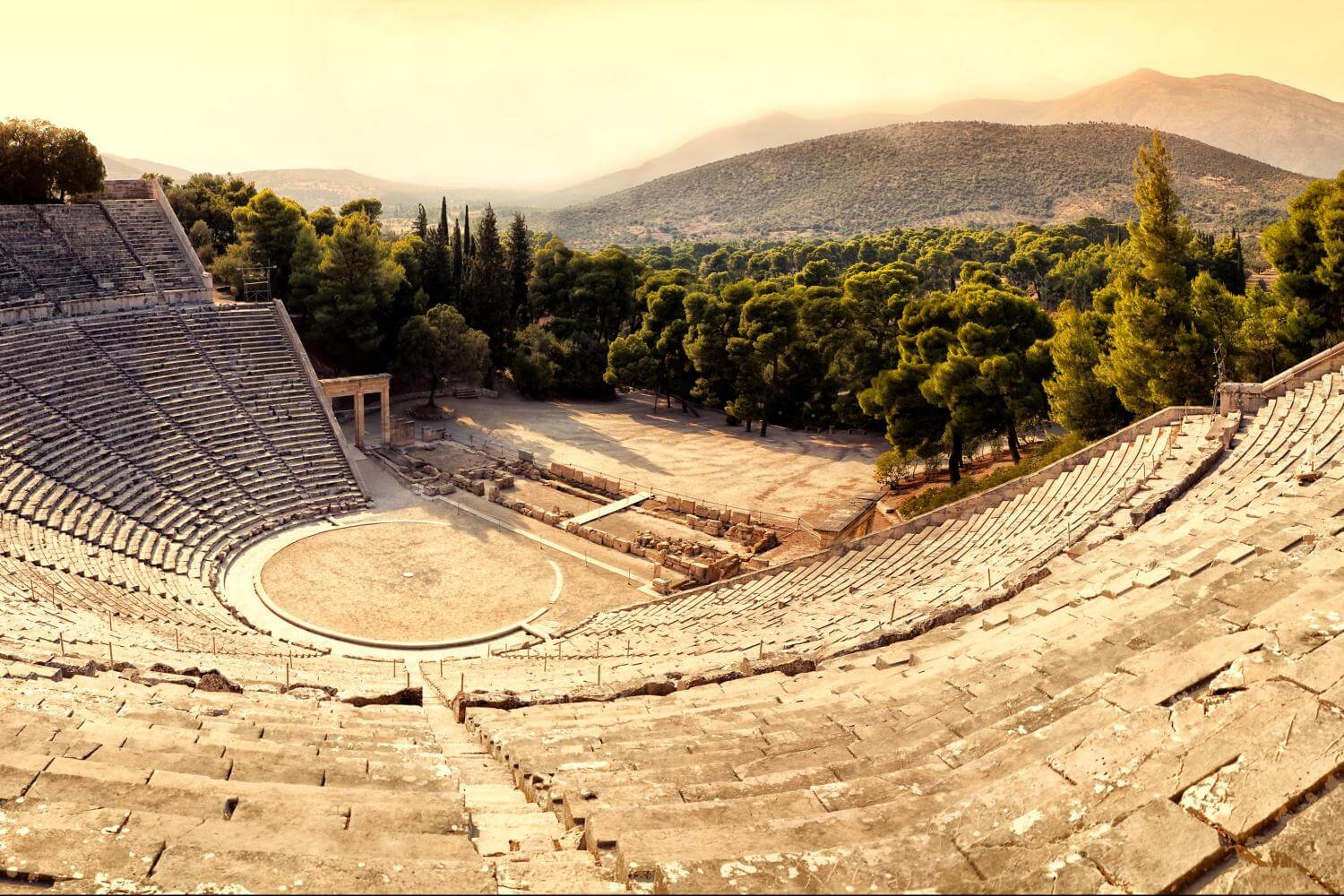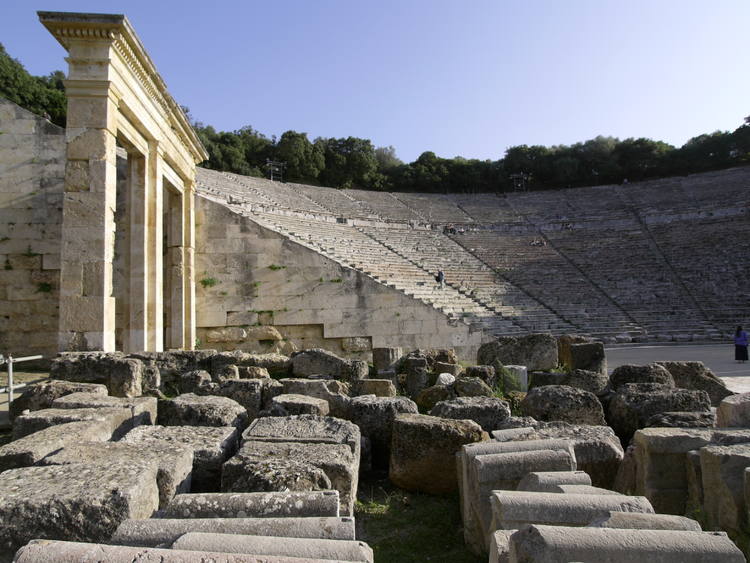
Epidaurus - Theatre

Brief Overview
Epidaurus was not independent of Argos and not included in Argolis until the time of the Romans. With its supporting territory, it formed the small territory called Epidauria.
Reputed to be founded by or named for the Argolid Epidaurus, and to be the birthplace of Apollo\'s son Asclepius the healer, Epidaurus was known for its sanctuary situated about five miles (8 km) from the town, as well as its theatre, which is once again in use today.
The cult of Asclepius at Epidaurus is attested in the 6th century BC, when the older hill-top sanctuary of Apollo Maleatas was no longer spacious enough.
The asclepeion at Epidaurus was the most celebrated healing center of the Classical world, the place where ill people went in the hope of being cured.
To find out the right cure for their ailments, they spent a night in the enkoimeteria, a big sleeping hall.
In their dreams, the god himself would advise them what they had to do to regain their health. Found in the sanctuary, there was a guest house for 160 guestrooms.
There are also mineral springs in the vicinity which may have been used in healing.
Asclepius, the most important healer god of antiquity, brought prosperity to the sanctuary, which in the 4th and 3rd centuries BC embarked on an ambitious building program for enlarging and reconstruction of monumental buildings. Fame and prosperity continued throughout the Hellenistic period.
In 87 BC the sanctuary was looted by the Roman general Sulla, and in 67 BC, it was plundered by pirates.
In the 2nd century AD, the sanctuary enjoyed a new upsurge under the Romans, but in AD 395 the Goths raided the sanctuary.
Even after the introduction of Christianity and the silencing of the oracles, the sanctuary at Epidaurus was still known as late as the mid 5th century, although as a Christian healing centre.

In Detail
Ancient Epidaurus
The Asklepieion of Epidaurus as an important healing center, considered the cradle of medicinal arts and the mother sanctuary of the plethora of other Asklepieia that were built throughout the Hellenic world.
The sanctuary of Epidaurus was named after the god of medicine, Asklepios, and pilgrims came from all over the Mediterranean seeking healing for their ailments through physical and spiritual means. The god was present at the sanctuary where the faithful underwent treatments ranging from purification with water to feasting with the divine after offering sacrifice. Additional activities such as baths and "enkoimeses" (incubation) were central in the healing process and allowed Asklepios to heal the patients.
There is evidence of habitation as far back as the 3d Millennium BCE, and chamber tombs indicate robust activity during the later Mycenaean Era (2nd c. BCE), but it was in the early 1st millennium BCE that the cult of Apollo Maleatas developed as the first therapeutic center that flourished in the 7th c. BCE. Shortly thereafter Asklepios appeared as the son of healing Apollo and was worshiped alongside Apollo Maleatas.
The sanctuary reached its zenith in the 4th and 3d centuries BCE with monumental buildings like the Enkoimeterion (dormitory) the Hestiatorion (the dining hall), the famous Theatre (ca. 12,000 spectators), the hospice, the temple, and the stadium.
While this and other similar religious sanctuaries based their therapies on spiritual powers, they became hubs of recorded incidents and in time this concentrated empirical knowledge developed into scientific healing that employed diets, medicines, and surgeries.
The sanctuary was plundered in the 1st c. BCE by Mithridates in his war against Rome, but it was subsequently rebuilt. It enjoyed its old fame during Imperial Rome, and even existed as a Christian healing center, but it eventually fell into decline.
[1]
Official Website and Map
Further Sources
[1] "Ancient Greece"
"Ancient History Encyclopedia"
"UNESCO"
"History"
Our Mobile Application
Check out Our Mobile Application "Ancient Greece Reloaded"


